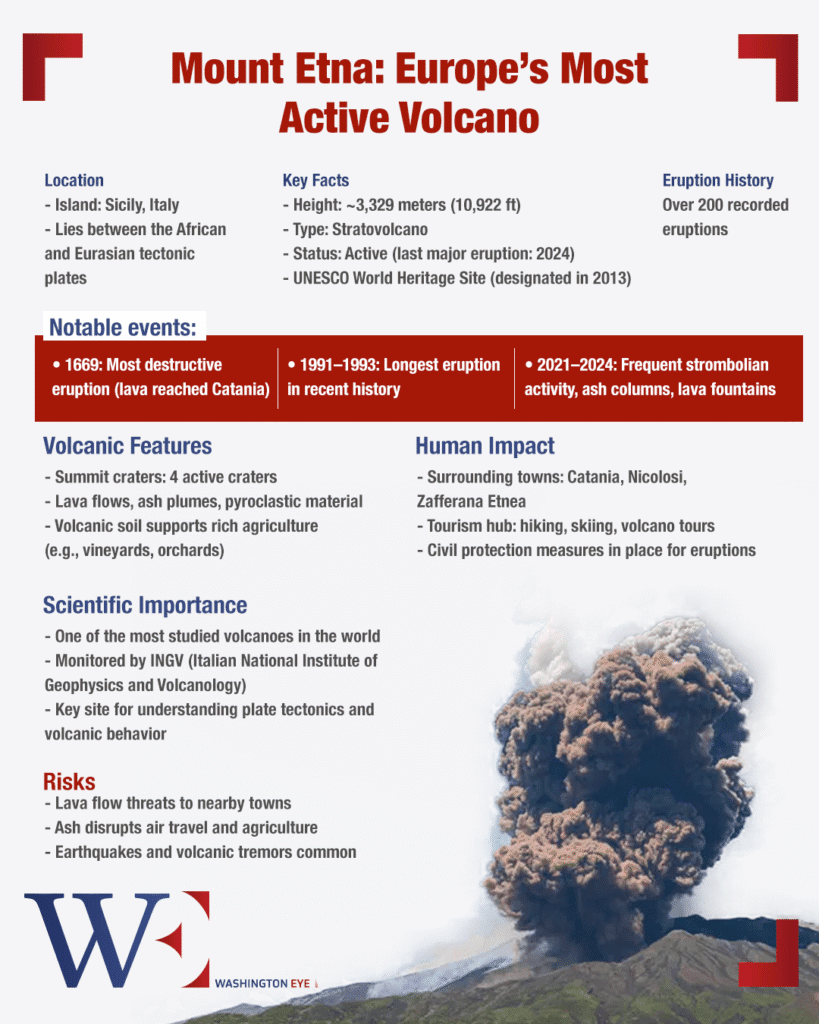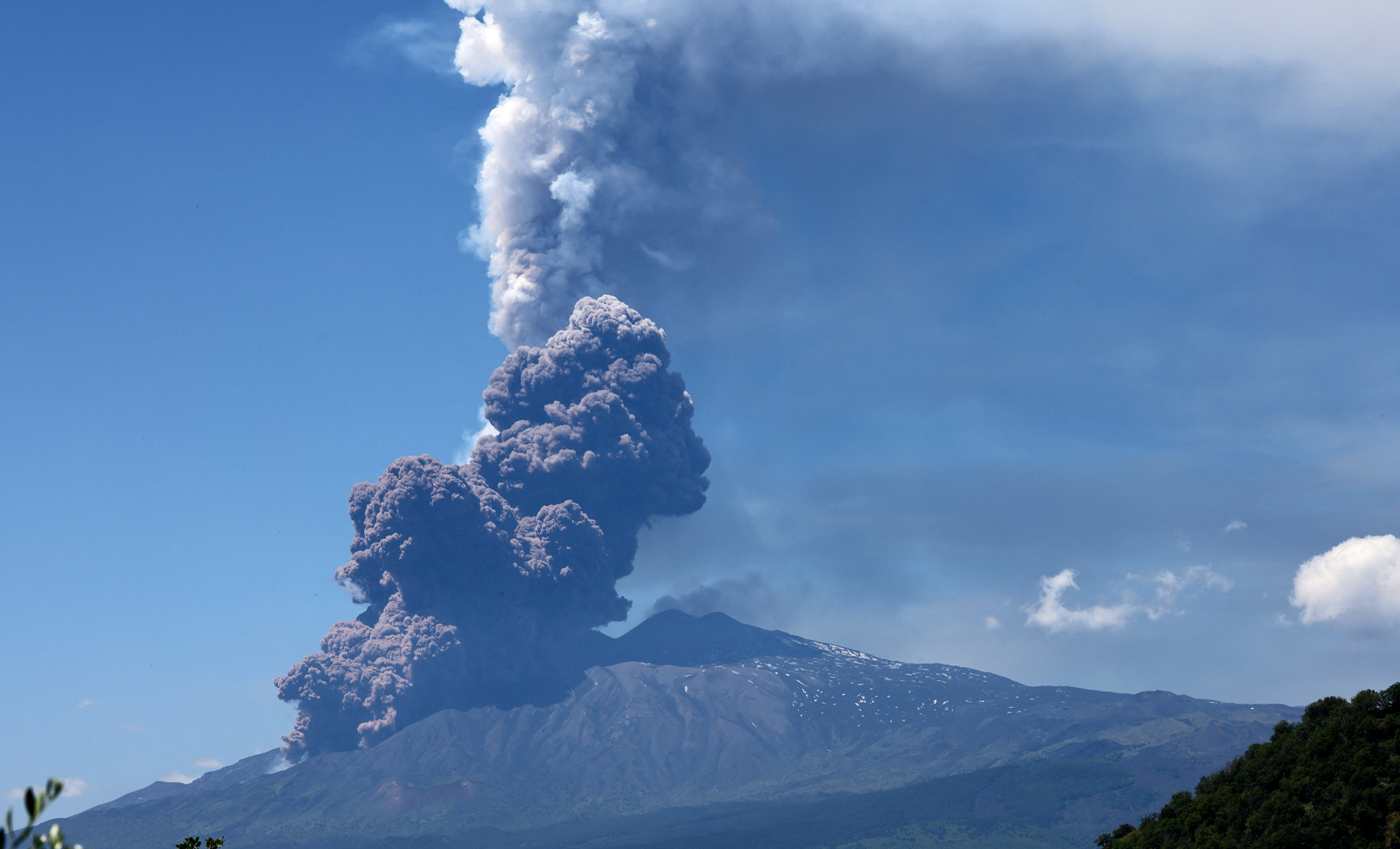On June 2, 2025, Mount Etna, Europe’s tallest and most active volcano, erupted dramatically, sending tourists fleeing as ash and lava spewed into the sky. The eruption began around 11:24 a.m. local time, coinciding with Italy’s national holiday, Festa della Repubblica, when many visitors were exploring the volcano’s slopes.
The eruption was characterized by intense strombolian activity, with lava fountains and pyroclastic flows descending the southeastern flank of the volcano. The Italian National Institute of Geophysics and Volcanology (INGV) reported that the activity was likely triggered by a partial collapse of the volcano’s southeast crater. The Volcanic Ash Advisory Centre in Toulouse issued a “code red” aviation alert, later downgraded to “orange,” as the ash plume reached approximately 6.5 kilometers into the atmosphere.
Despite the dramatic visuals, authorities confirmed that the lava flows remained confined within the Valle del Bove, a natural depression on the volcano’s flank, posing no immediate threat to nearby communities. Catania Airport remained operational, although some flights experienced delays due to the ash cloud.
Tourists present during the eruption captured videos showing people running down the slopes as ash and rocks fell around them. Approximately 40 tourists were near the volcano at the time, according to a tour operator. Fortunately, no injuries were reported.
Mount Etna, standing at nearly 11,000 feet (3,300 meters), is a UNESCO World Heritage site and a popular tourist destination due to its frequent activity and accessibility. The volcano has experienced increased activity in recent years, with this eruption being the most significant since 2014.
Local authorities have urged tourists to exercise caution and avoid venturing close to the summit. The Civil Protection Department recommended steering clear of the area due to the volatile nature of volcanic activity. While the eruption has not caused significant disruptions, officials continue to monitor the situation closely.
As of June 3, 2025, the eruption has subsided, and the ash cloud has dissipated. The situation remains under control, with no immediate danger to residents or tourists. Travelers are advised to stay informed through official channels and adhere to safety guidelines when visiting volcanic areas.

















